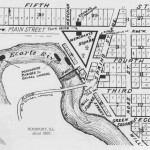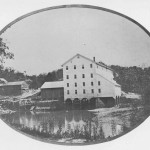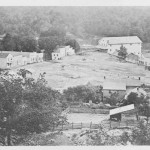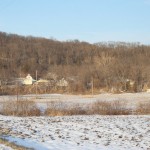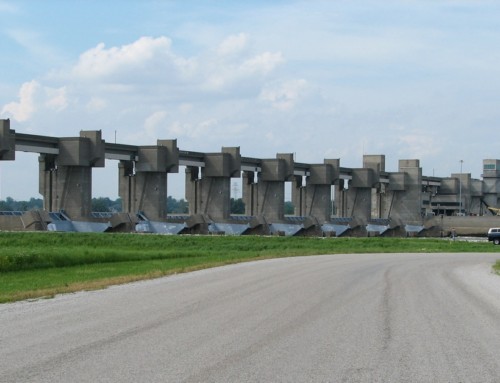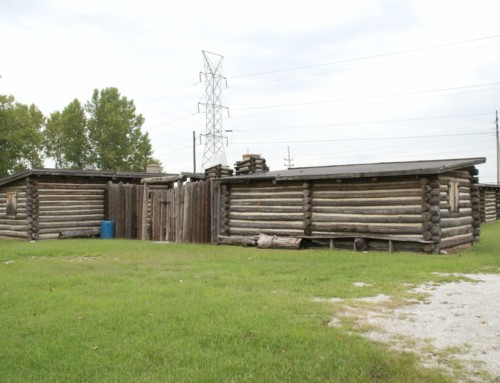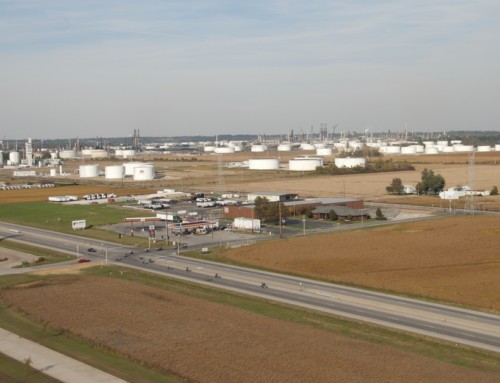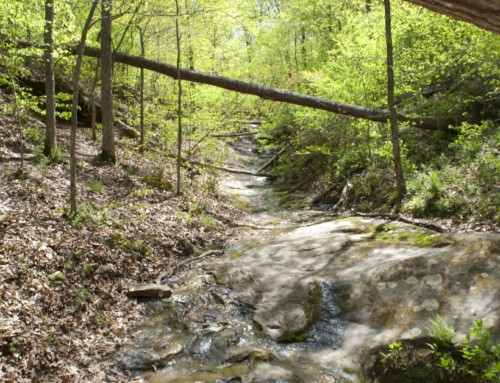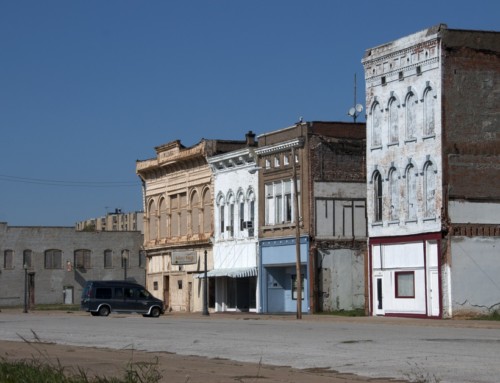Visitor Information
Get your questions answered from the folks at the Pike County Chamber of Commerce (217.285.2971).
History
Pike County’s first European resident, Ebenezer Franklin, built a home near present-day Rockport in 1820. For a while the area was known as Pecan Grove, because, well, there were a lot of pecan trees nearby. It’s hard to imagine today, but Rockport was once a busy place, thanks to milling and water access that has been engineered away.
The Sny curved inland here and once came right up to Rockport, so the flow in the channel provided a reliable source of power, as well as a narrow strip of land next to the bluff that was elevated a few feet above the rest of the bottoms. In addition, between The Sny and Canal Slough, the channels were deep enough for boats to navigate from Rockport to the Mississippi River. William Ross kicked things off in 1828 when he built a sawmill. Two years later, John Warburton built a flour mill; it burned down in 1846, in 1853, and again in 1867 but was rebuilt after each fire.
In the early years, goods were moved on barges that were propelled by manpower—guys pushing the boats around using long poles. Gilgal Landing was a transfer point where those smaller boats would unload cargo onto bigger boats that would carry the goods on the Mississippi proper. Water levels on the Sny could be highly variable, though, so plans were made in the 1830s to build a canal between Rockport and Gilgal Landing; those plans, however, crashed with the economic troubles of the late 1830s.
The village itself was platted in 1836 by Lyman Scott and called Rockport, letting go of previous names like Sunol and Atlas Mills. When the county seat was moved from Atlas to Pittsfield in 1833, some businesses moved down the road from Atlas to Rockport.
Rockport was done-in, though, by the construction of the Sny Island Levee in the 1870s, which dried out The Sny, cutting off water power for the mills. That also cut off Rockport’s water route to the Mississippi. Sure, Rockport had a road to a Mississippi River landing, but many other communities did, too, so Rockport no longer had a competitive advantage. The mills didn’t passively accept the destruction of their business, though.
Mill owners Gilbert Shaw and James Rupert concocted a plan to cut a hole in the new levee to replenish The Sny, and nearly succeeded. In October 1874, they hired nearly 100 workers in St. Louis and quietly brought them upriver on a steamboat. They were paid $1.75 a day to dig, with the goal of creating a 20-foot wide gap in the levee. They planned on slipping back to St. Louis on a steamboat before anyone noticed.
Someone noticed, though, a farmer named Edwards. The crew threatened Edwards but he got away on his horse and rallied his neighbors to protect the levee. They went back in the morning, armed, and forced the crew to stop digging, watching them all carefully until the sheriff arrived. The workers were taken to Quincy and jailed; they had carved out a pretty good dent in the levee but not enough to cause a breach.
About a year and a half later, the mill burned down again, but this time it wasn’t rebuilt; the business just wasn’t profitable anymore. The mill owners sued the following year, claiming that the levee had ruined them and requesting restoration of the flow in The Sny. The mill owners won, but the landowners, whose property was worth much more money after the levee was built, agreed to pay a settlement of some $30,000 rather than flooding their now highly valuable land. Rockport never had another mill.
If all this is hard to imagine today—especially given the rather ragged appearance of Rockport today—it’s not just because the levee dried out the old channel; the channel of The Sny was also straightened around 1900, so it’s about a mile and half away from Rockport today. After the mill closed, Rockport survived as a small community with a farm-based economy, but, like similar towns, suffered a steady decline of residents and businesses after World War II.
Entertainment and Events
Festivals
Rockport is one of the communities that participates in the Pike County Fall Pickin’ Days, a chance to enjoy fall color and support local vendors in small towns as you drive around the countryside. Each community offers something a little different for visitors (October).
**Looking for more places to visit along the Mississippi River? Check out Road Tripping Along the Great River Road, Vol. 1. Click the link above for more. Disclosure: This website may be compensated for linking to other sites or for sales of products we link to.
Where to Go Next
Heading upriver? Check out New Canton.
Heading downriver? Check out Atlas.
Community-supported writing
If you like the content at the Mississippi Valley Traveler, please consider showing your support by making a one-time contribution or by subscribing through Patreon. Book sales don’t fully cover my costs, and I don’t have deep corporate pockets bankrolling my work. I’m a freelance writer bringing you stories about life along the Mississippi River. I need your help to keep this going. Every dollar you contribute makes it possible for me to continue sharing stories about America’s Greatest River!
Rockport Photographs
- Early Rockport, IL (from A History of Gilgal Landing and Rockport, Illinois)
- Flour mill; Rockport, IL (from A History of Gilgal Landing and Rockport, Illinois)
- Rockport, IL; 1870s (from A History of Gilgal Landing and Rockport, Illinois)
- Rockport, IL today
©Dean Klinkenberg, 2016

